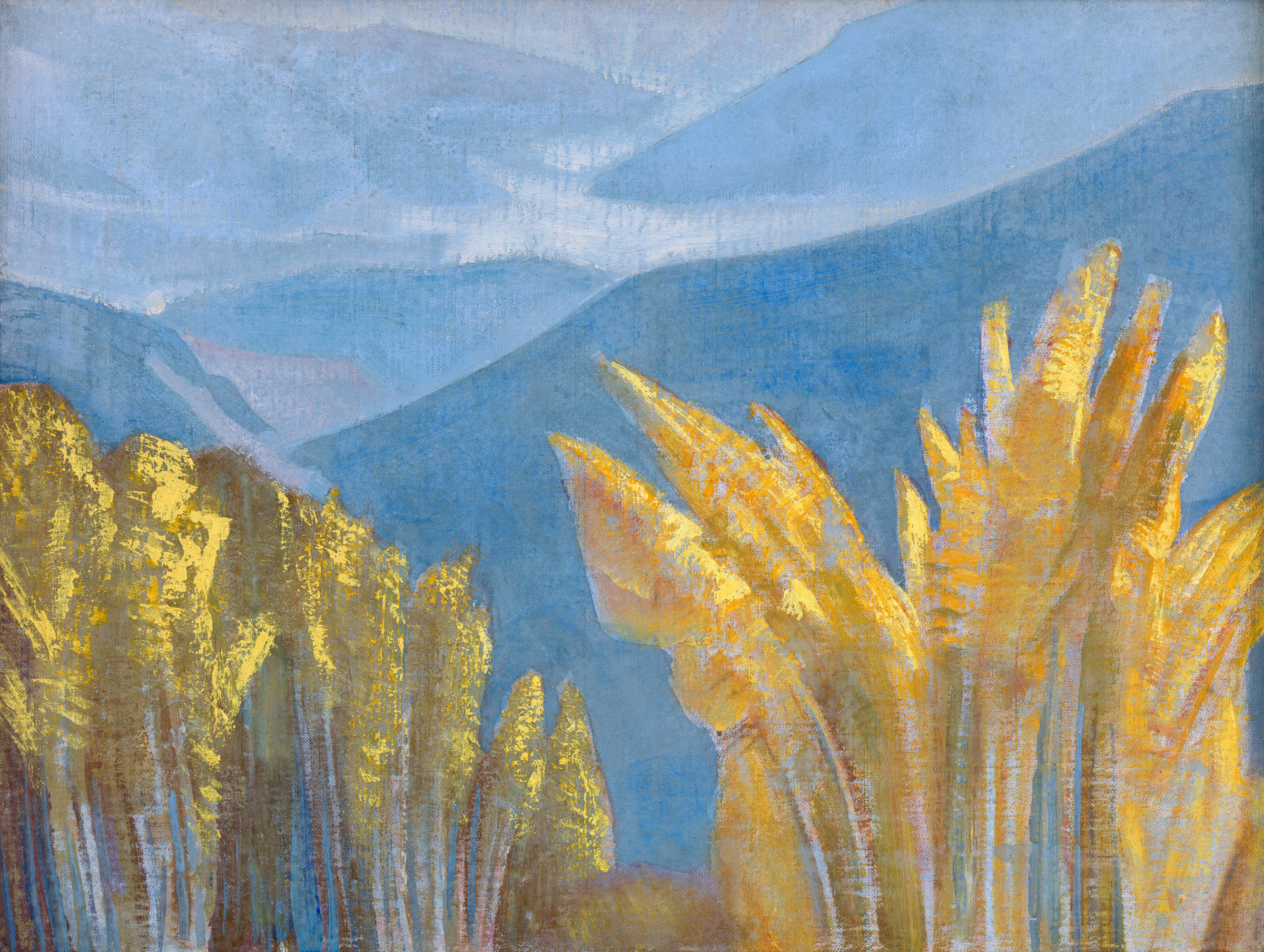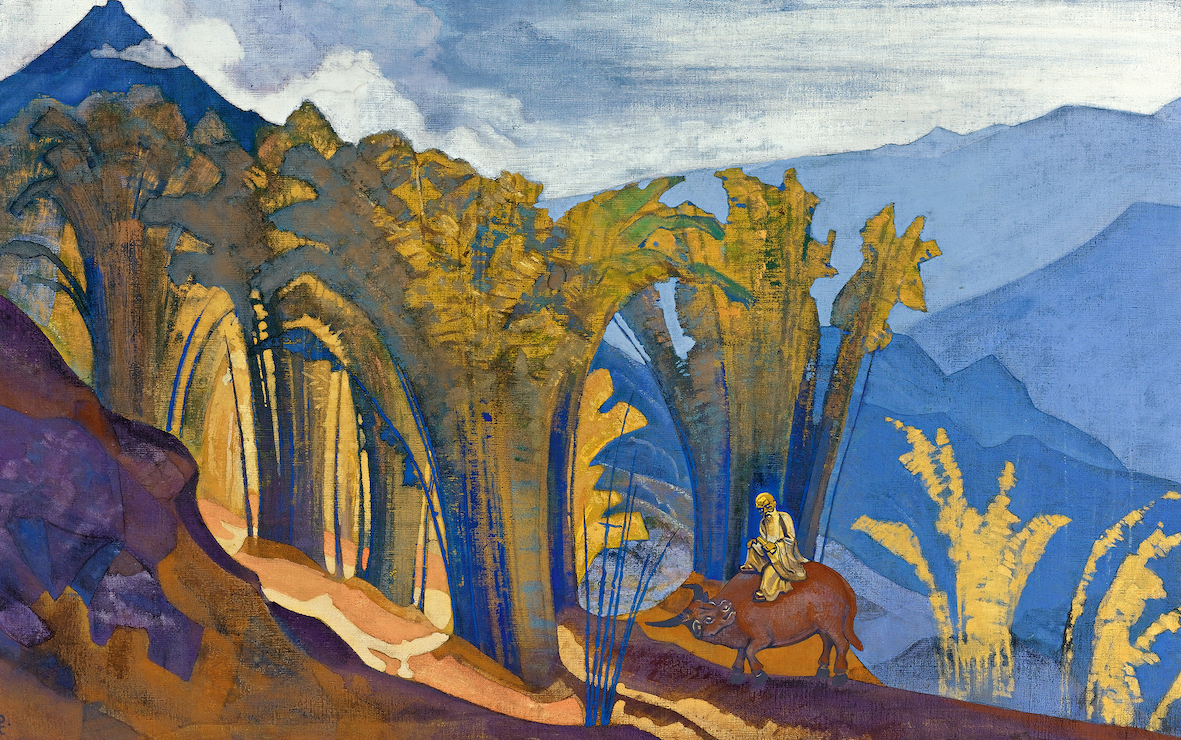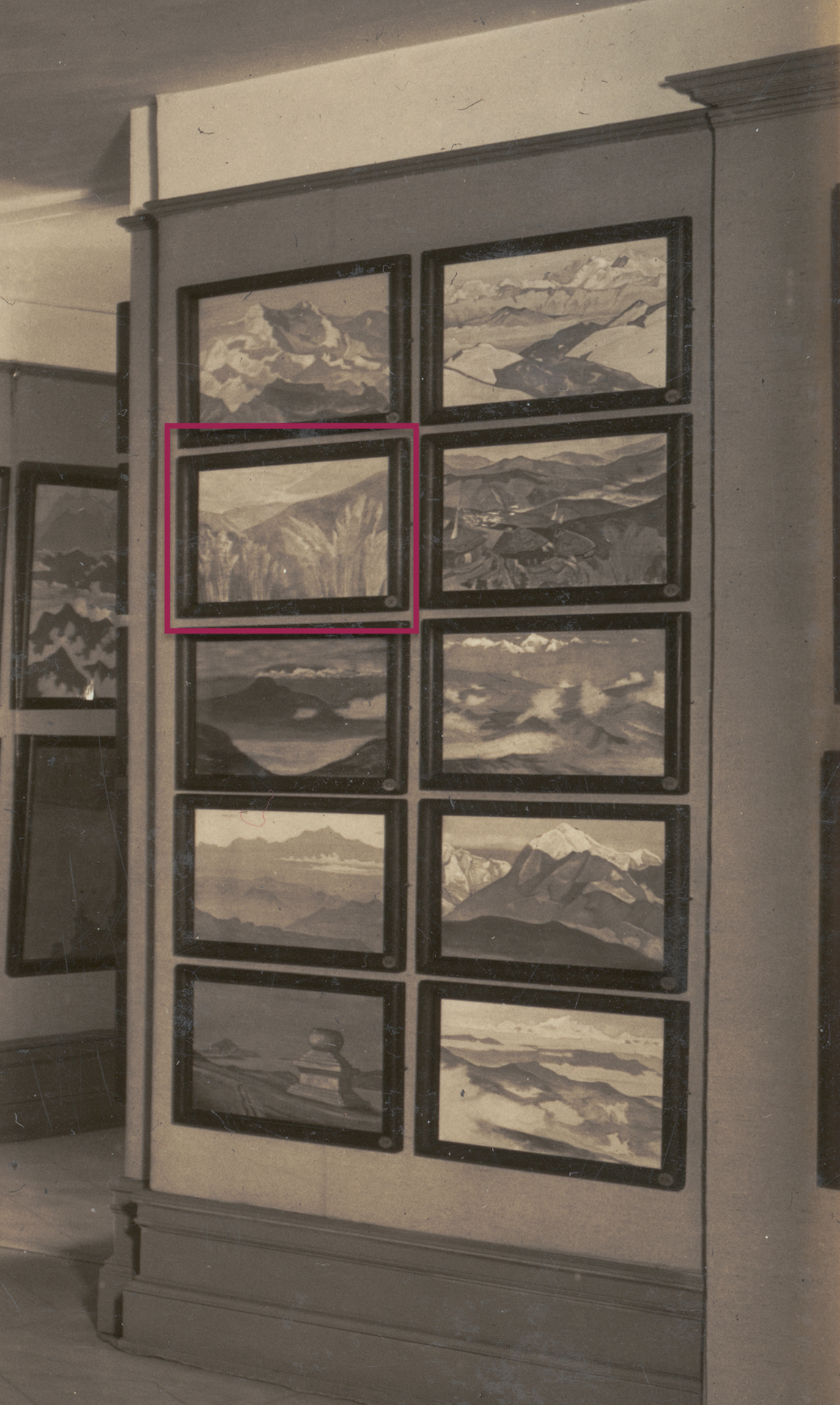ÉCOLE DE PARIS AND OTHER MASTERS
4 December 2024

* 5. ROERICH, NICHOLAS (1874-1947)
Bamboos, from the 'Himalayan' series. 1924.
Tempera on artist board, 30 by 40.3 cm.
SOLD FOR 138,900 GBP
Provenance: Collection of the Roerich Museum, New York, 1924–1935.
Collection of Nettie and Louis Horch, New York, until 1957.
Collection of Dr. Carlos Giro, New York, until 2005.
Acquired from the above by the previous owner.
Private collection, USA.
Thence by descent.
Private collection, USA.
Exhibited: Roerich Museum (permanent collection), New York, 1924–1935.
Literature: N. Roerich, List of Paintings 1917-1924, no. 42 (listed as 'Бамбуки'), MS in Nicholas Roerich Museum archive.
F. Grant et al., Roerich, Himalaya, A Monograph, New York, Brentano Publ., 1926, p. 200.
Roerich Museum Catalogue, 8th ed., New York: Roerich Museum, 1930, p. 22, no. 494.
Nicholas Roerich first set foot in southern India in late 1923 and travelled north across the country to the Himalayan principality of Sikkim. Here, during the first nine months of 1924, he got acquainted with various cultural traditions and beliefs, visited shrines, temples, monasteries, and holy places associated with the names of heroes, saints, and ascetics. But first and foremost, he fell in love with the majestic Himalayas and painted over 80 canvasses, organized in four series – His Country, Banners of the East, Sikkim, and Himalayas. These works reflected his vision of the region as “two worlds” – the world of “the mundane, full of local enchantments”, and the world of the spirit, of “dazzling, impassable peaks”.
The painting Bamboos belongs to the Himalayan series and was created in the spring of 1924 in Darjeeling, at an altitude of over 2100 meters. It may be considered preparatory material for the painting, Lao Tze [current transliteration Lao Tzu or Laozi] from the Banners of the East series (ill.1). All the works created in Sikkim, Bamboos included, were sent to New York in the autumn of 1924 and remained in the Roerich Museum’s collection until 1935. The 1927/8 photo of one of the Museum’s galleries shows Bamboos among other paintings from the Himalayan series (ill.2).
Around 1917, a new genre – philosophical and symbolic landscape – began to develop in Roerich’s work. Henceforth, elements of the natural landscape often came to convey spiritual quest and transcendental experience, and the paintings became “maps of the soul’s journey”.
The artist’s arrival in India and travels throughout the country’s north provided him with abundant visual and cultural material for further developing his work along these lines. New impressions – the intensity of subtropical hues; majestic mountains; monuments of ancient culture brimming with deep religious, philosophical, and aesthetic content; finally, the age-old spiritual atmosphere of yogic traditions – fostered conditions for a qualitatively new stage in his artistic career.
The Himalayan series consists of 30 by 40 cm landscapes, which, to all appearances, were to be used as an impetus for further, more elaborate, and substantial canvases. Bamboos is a good example of that. When considered together with the later work Lao Tze (ill. 1), it clearly demonstrates how elements of nature in Roerich’s paintings acquired the quality of “landscapes of the soul”. Bamboos depicts a bamboo grove illuminated by the bright midday sun, captured by the artist in one of the Sikkim valleys against the background of the Himalayas. The golden sun-infused bamboos are presented in an impressionistic and generalized manner, drawing parallels with ears of wheat ripe for harvesting. Blue mountains, shrouded in the cloudy haze of the highlands, undulate in the distance. The combination of sunny golds and shades of blue strikes a deep mystic chord. This is perhaps the artist’s favourite colour scheme around this time, symbolizing the underlying sublime spirituality and transcendent human experience. Thus, in Lao Tze this rendering of bamboos becomes a most important symbolic element in Roerich’s homage to the legendary founder of Taoism in China. The golden bamboos, against which Lao Tzu is portrayed in his traditional iconographic image (riding a buffalo carrying him to the West across China’s border), express his powerful aspiration to the knowledge of the Tao, the one eternal source of all being, while the bamboo grove which Lao Tzu is about to enter may very well symbolize the brotherhood of immortals whom, according to Roerich, Lao Tzu was to join after completing his earthly life.
We are grateful to Gvido Trepsa, Director of the Nicholas Roerich Museum, New York, and Victor Zhigota for their assistance with cataloguing this work.
Illustration 1. N. Roerich. Lao Tze, from The Banner of the East series, 1924.
Illustration 2. The present lot on display in the Roerich Museum, 1927-1928.


Notes on symbols:
* Indicates 5% Import Duty Charge applies.
◎ Indicates the lot is located outside the UK. Successful bidders would collect their lots outside the UK after payment.
Ω Indicates 20% Import Duty Charge applies.
§ Indicates Artist's Resale Right applies.
† Indicates Standard VAT scheme applies, and the rate of 20% VAT will be charged on both hammer price and premium.